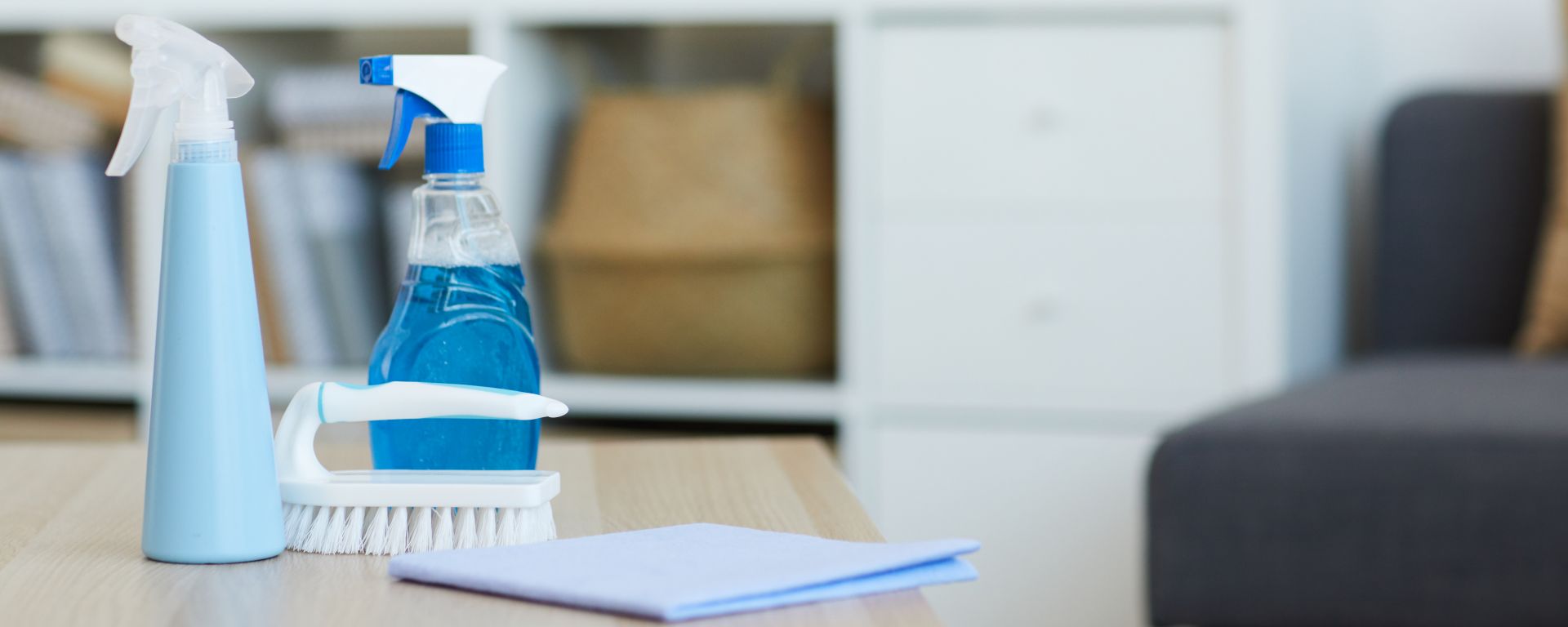Cleaning products come in different shapes and sizes, numerous types of packaging, and various strengths. But how do they actually work? It’s not a question that often gets posed, as we’re usually more worried about the organising and cleaning result than the actual process. Nevertheless, it’s always interesting and important to learn how cleaning ingredients combine to each play their role for you to get the desired effect you hope for.
In this post, we’ll give you an insight into special cleaning situations by breaking down the science of cleaning and how cleaning products work. Keep reading to find out about the different types of dirt and stains that exist, and how cleaning ingredients work to break these down.
The Basics of Cleaning
Regular cleaning is a task we all need in our lives. Whether it’s at home or office cleaning, it’s important for health, productivity, and organisation. What exactly does cleaning get rid of? Various unwanted stains and dirt particles. Plain water, even if it’s boiling hot, isn’t enough to remove them as effectively as we need. Added to that, it’s important to use cleaning agents suitable for the specific task to get rid of the various unwanted substances.
The Different Types of Dirt and Stains
Listed below are the various types of dirt particles and stains you’re likely to encounter at home or in the office:
- Grease and oil stains
- Food and drink stains
- Mud and dirt stains
- Blood and bodily fluid stains
- Mold and mildew stains
How Cleaning Products Work to Remove Dirt and Stains
Cleaning products are specifically designed to eradicate unwanted substances that, if left for too long, can cause serious problems. They work by breaking down the chemical bonds between dirt and surfaces. This makes it easier to remove them through cleaning tasks such as wiping, mopping, etc. This process is made possible through surfactants, enzymes, and other ingredients, which we’ll explore in more detail below.
1. Surfactants: The Key to Cleaning Products
Surfactants are chemical compounds that lower the surface tension between liquids and solids or liquids and gases. This loosens and removes dirt and stains from surfaces. They have a way of breaking the surface tension of water and allowing it to penetrate the dirt, making it easier to remove. You’ll find them as a key ingredient in many cleaning products, including detergents, soaps, and degreasers.
Common Surfactants Found in Cleaning Products
Listed below are some of the most common surfactants you’ll find as ingredients in cleaning products:
- Sodium lauryl sulphate (SLS)
- Sodium laureth sulphate (SLES)
- Cocamidopropyl betaine (CAPB)
- Alkyl polyglucosides (APGs)
- Ethoxylated alcohols (AEs)
- Linear alkylbenzene sulfonate (LAS)
- Alcohol ethoxysulfates (AES)
- Cationic surfactants (quaternary ammonium compounds)
- Nonionic surfactants (polyethylene glycols, sorbitan esters, etc.)
2. Enzymes: Nature’s Cleaning Agents
Enzymes are biological molecules that create and accelerate chemical reactions in living organisms. In cleaning products, they are the natural cleaning agents that have the main job of breaking down organic stains, such as food, blood, and sweat. Some stains are stubborn and therefore difficult to remove with surfactants alone, and this is where enzymes come into play.
Common Enzymes Found in Cleaning Products
These are the most common enzymes you’ll find as ingredients in cleaning products:
- Protease – Breaks down proteins.
- Amylase – Breaks down starches and carbohydrates.
- Lipase – Breaks down fats and oils.
- Cellulase – Breaks down cellulose fibers.
- Mannanase – Breaks down plant-based stains such as guar and xanthan gum.
- Pectinase – breaks down pectin, mainly found in fruit and vegetable stains.
- Lactase – Breaks down lactose, mainly found in milk-based stains.
- Phospholipase – Breaks down phospholipids, mainly found in oily stains.
3. Other Ingredients in Cleaning Products
Other than surfactants and enzymes, there are other ingredients in cleaning products that enhance their cleaning performance. Let’s take a look at these ingredients below, as well as the role they play in the cleaning process:
- Chelating agents – Help to remove hard water minerals and prevent a buildup of soap scum.
- Solvents – Work effectively at dissolving greasy stains and residues.
- pH adjusters – Help to balance the acidity or alkalinity of the cleaning product. This is vital when it comes to removing specific types of stains or doing specialised cleaning tasks.
Choosing the Right Cleaning Product
If you choose the correct product for the cleaning task at hand, your efforts will be much more effective. If you’re a cleaning newbie, reading labels and doing a little research beforehand can help ensure that you choose the best cleaning product for your needs.
Factors to Consider When Choosing a Cleaning Product
When selecting a cleaning product, there are certain considerations to take into account. Let’s take a look at these below:
- Surface type: Different surfaces require different cleaning products, not only for a job well done, but also to avoid damage. For example, a harsh, effective cleaner that works well on a tile floor may damage a delicate wooden surface. Be sure to choose a cleaning product that has been specifically designed for the surface needing cleaning.
- Type of dirt or stain: Dirt and stains are removed thoroughly by some cleaning products, and not as much by others. For example, an enzymatic cleaner will be more effective on stains like blood or urine, while a degreaser will work better on oil or grease stains.
- Sensitivities or allergies: Some cleaning products have potentially harmful ingredients, while others are more natural. If you or someone in your household has sensitivities or allergies, stick to cleaning products that are hypoallergenic and free of harsh chemicals.
Conclusion
Overall, the companies that manufacture cleaning products make it easy to identify what you need. When looking at labels, you’ll be able to figure out the type of product, what it’s suitable for cleaning, and how natural or unnatural it is. Follow the given instructions, and you’ll be good to go.
If you don’t have the time to get your hands dirty, a SweepSouth cleaning service is just one click away. It’s as easy as rounding up your cleaning products, booking a professional SweepStar, and enjoying the benefits of a clean, happy home. Book today and enjoy the results from SA’s most trusted home services brand.








